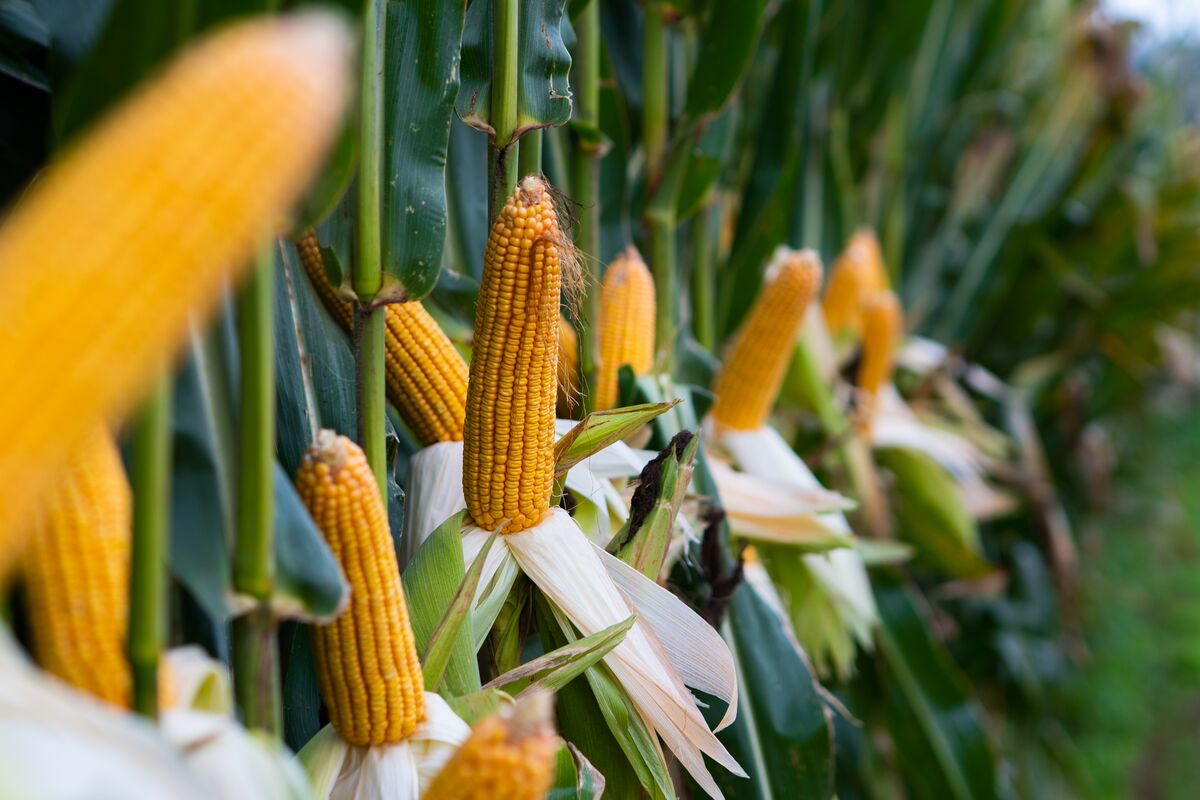Keep ahead of the threat
Stay up to date with the latest mycotoxin information by signing up to our newsletter

Indian livestock producers facing corn quality challenges
Authors: Chloe Chisholm, Digital Marketing Specialist & Martin Minchin, Mycotoxin Management Marketing Manager | Alltech
Click to listen to the Mycotoxin Matters podcast episode with Dr. Lokesh Gupta and Raksha PR, hosted by Nick Adams. In this episode, they discuss how Indian livestock producers have been impacted by multiple challenges during this harvest season and the findings of the 2022 Alltech Harvest Analysis in the region. You can also listen to the episode on Apple Podcasts or Spotify. You can find an edited transcript at the bottom of the page.
A year that promised so much for Indian corn producers turned out much the opposite when crops began being harvested. Fertiliser shortages, adverse weather conditions and pest damage all played a role in driving down the yield and quality of both the earlier and later harvests (Rabi and Kharif).
This year marked the third time that Alltech India has completed a fresh harvest assessment, which they first launched in 2019. This analysis is an important tool for both the Alltech India team and the wider feed and livestock sector. Using the insights gained from the corn assessment, feed and livestock producers are empowered with information that can drive key nutrition and mycotoxin control decisions during the coming feeding season. Taking advantage of the country’s tropical climate, India can produce two corn harvests. Rabi corn is typically harvested in May and June, while the Kharif crop is harvested in October and November. Of the 10 million hectares of total corn grown in India in an average year, the Kharif crop would represent approximately 70% of this area.
The team at Alltech India takes a unique approach to their annual harvest analysis. To complete the harvest, the local team travels through the key grain-growing regions, interviewing crop producers, taking grain samples and visiting the local trading centres (Mandis). Spending time in the field with maize growers and traders gives the team a better understanding of the ground-level challenges farmers face and how they impact both the demand and supply curve and price fluctuations.
The following states are included in the 2022 harvest analysis:
Rabi corn
Bihar
Kharif corn
Karnataka
Andhra Pradesh
Telangana
Maharashtra
Once the samples are collected, they are sent to the laboratory for analysis. The samples’ moisture, protein, grain weight, mold count and mycotoxin levels are then assessed. Alltech RAPIREAD® is used to determine the mycotoxin levels of each sample and tests for six key toxins: aflatoxin, ochratoxin, T-2, DON, fumonisin and zearalenone.
Rabi corn assessment
Corn growers in Bihar faced the perfect storm when it came to their 2022 crops. The state received just 65% of its fertiliser allowance, significantly compromising yields. Climatic extremes only compounded the problem. An extremely dry March and April, followed by thunderstorms in early May that damaged standing crops, created optimal conditions for mold and mycotoxin development. Protein percentages were lower in the assessed samples, while over 90% of samples exceeded the desired mold count. Driven by the presence of multiple mycotoxins, the overall Risk Equivalent Quantity (REQ) of the samples was moderate to high when applied to broiler diets. The mycotoxin levels of these samples are highlighted in Table 1 below.
Table 1: Average and maximum levels of mycotoxins in Kharif corn samples
| Mycotoxin | Average levels (ppb) | Maximum (ppb) |
| Aflatoxin | 43.5 | 108 |
| Ochratoxin | 2.6 | 11 |
| DON | 21.7 | 128 |
| Fumonisin | 1,623 | 7,675 |
| Zearalenone | 62.3 | 258 |
Kharif corn assessment
Much like in the Rabi crop, pest damage was less of an issue during the Kharif corn growing season, meaning that adverse weather was the main contributing factor to reduced yield and crop quality across the states of Karnataka, Andhra Pradesh, Telangana and Maharashtra. Davangere, a district in Karnataka and a hub of maize production, received 641 millimetres of rain over the year, which is double the amount of rainfall it usually receives. Similarly, in Maharashtra, maize crops that were stored outside for drying absorbed moisture from the unexpected late-season rain. As a result, the overall moisture level was high, which led to the rapid development of mold growth. In the collected samples, approximately 180,000 CFU units of mold per gram were observed, compared to the expected value of around 10,000 CFU per gram. Furthermore, 50% of the samples assessed displayed mold levels above 100,000 CFU units per gram. Reflecting the mold levels, the multiple mycotoxin challenge was present in all samples that were analysed, with the average and maximum levels outlined in the table below.
Table 2: Average and maximum levels of mycotoxins in Kharif corn samples
| Mycotoxin | Average levels (ppb) | Maximum (ppb) |
| Aflatoxin | 35 | 164 |
| Ochratoxin | 1.70 | 15.30 |
| T-2 | 2.16 | 5 |
| DON | 186 | 418 |
| Fumonisin | 1,324 | 12,410 |
| Zearalenone | 71.75 | 640 |
What do these results mean for poultry producers?
The Indian poultry industry has undergone a significant transformation over the last two decades and has emerged as one of the major sectors of the country’s agricultural economy. Currently, India is the third-largest egg producer and fourth-largest poultry meat producer in the world. These numbers are expected to grow by around 8% in the next five to 10 years. Much of the corn assessed in these analyses will be destined for poultry diets in the coming year. When using corn of this quality in a poultry diet, we can expect weight reductions of around 80 grams in broilers. A reduction in laying performance is also expected.
Similarly to what is being experienced other parts of the world, Indian poultry producers are facing many challenges right now. The war in Ukraine and reduced grain availability have led to higher feed costs, while output prices for chicken and eggs are on the lower side, putting significant pressure on producer margins. At a time when production efficiency is of critical importance, understanding and responding to compromised feed quality is key. Regularly testing ingredients and feeds for mycotoxins is one part of this strategy. Poor-quality grain can rapidly deteriorate during storage, so this must be taken into consideration over the coming months. Also, as producers struggle to source parent grains of corn and wheat, many will turn to the use of by-products, such as DDGs or wheat brans. Alltech’s mycotoxin risk assessments typically demonstrate a higher mycotoxin risk in these types of ingredients, so that is another factor for feed and livestock producers to be aware of when formulating diets.








